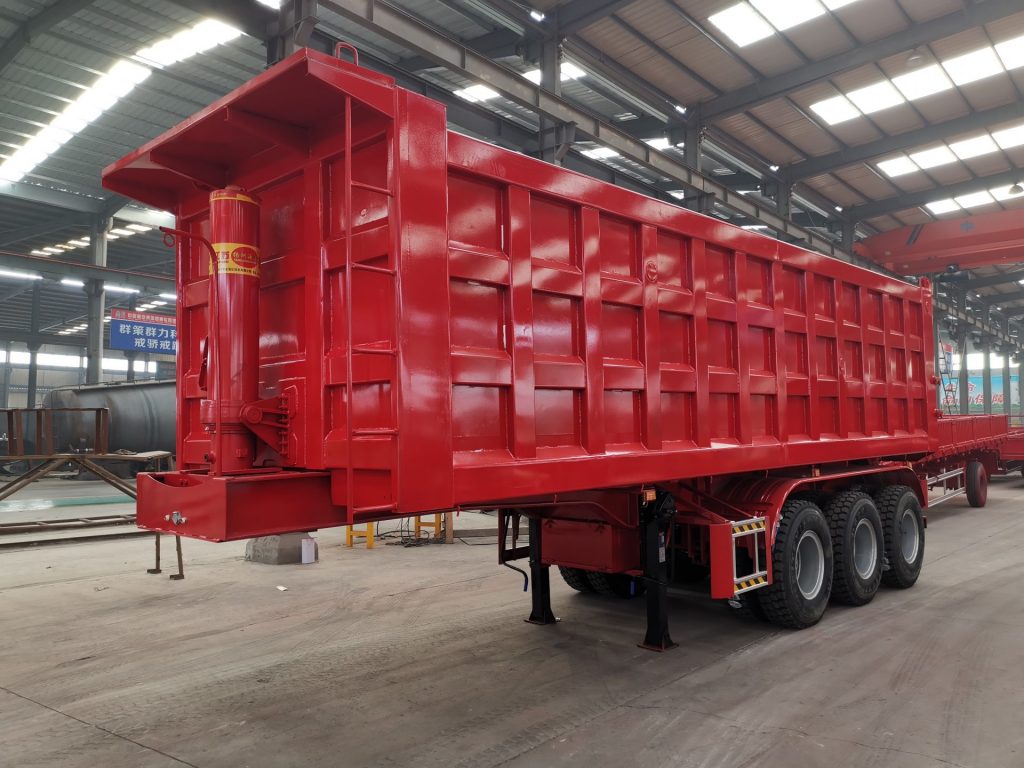Precautions for Using Rear Tipping Semi Trailer
1. The hydraulic lifting principle of the rear tipping semi-trailer: the power take-off of the main vehicle transmission is operated to drive the hydraulic pump to work. The hydraulic pump sucks the hydraulic oil in the hydraulic oil tank through the low-pressure oil inlet pipe and generates high-pressure oil for output. The high-pressure oil enters the lift valve through the high-pressure oil pipe, and the lift valve delivers the high-pressure oil to the oil cylinder or drains it into the hydraulic oil tank under the control of the air control valve to realize the lifting, intermediate stop and lowering functions of the hydraulic oil cylinder. Therefore, the rear tipping semi-trailer generally does not have a power unit, and it should be used with a tractor.
2. Dump semi-trailer cargo handling is better to choose in a flat place. If the goods are transported in a place with a slope, they should follow the ramp, and the front of the car should be directed to the front and bottom of the ramp. Someone must direct the loading and unloading, and the actual operation must be careful. Pay attention to prohibit the loading and unloading and moving of goods for the rear tipper semi-trailer on the ramp.
3. When the carriage is lifted, the engine speed is not allowed to exceed 2400r/min, so as to avoid damage to the oil pump due to overspeed operation, or the carriage rolls over due to too much lifting. Especially when it is about to be lifted to the maximum angle, the accelerator should not be increased, otherwise the carriage may be lifted excessively, which will cause deformation or damage to the box, falling off of the oil cylinder and damage to other lifting components.
4. During the loading and unloading process, the driver must observe the changes of the carriage from the rear windshield of the car. If the tires sink and the semi-trailer tends to tilt to one side, the loading and unloading should be terminated immediately. When loading and unloading relatively large


